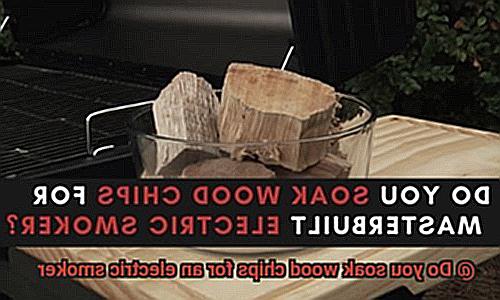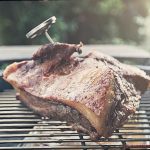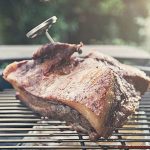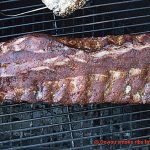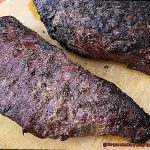Are you a passionate electric smoker who loves to experiment with different wood chips and spices to elevate the flavor of your meat? If so, you’ve likely pondered the age-old question of whether or not to soak wood chips for your electric smoker. While some swear by soaking as a means of releasing more smoke and imparting a unique flavor, others argue that it’s unnecessary and may even hinder the smoking process.
So, what’s the verdict? In this blog post, we’ll delve into the pros and cons of soaking wood chips for an electric smoker. We’ll explore the science behind wood smoking and examine how soaking affects smoke production and flavor. Additionally, we’ll analyze how soaking can impact temperature regulation during cooking and optimal smoking time.
Whether you’re an experienced smoker or just starting out, understanding the role of wood chips in smoking is crucial to achieving delicious flavors. So let’s put on our chef hats and dive into the exciting world of electric smoking and wood chips – and answer once and for all whether or not we should be soaking those chips before firing up our electric smokers.
Contents
What is an Electric Smoker?
If you’re a fan of the rich, smoky flavor of BBQ but find traditional smoking methods to be too much work, an electric smoker might just be what you need. This cooking appliance uses electricity to generate heat and smoke, making it a convenient and easy way to replicate the flavor and texture of traditional smoking methods.
At its core, an electric smoker consists of four main components: a heating element, smoke generator, temperature controller, and cooking chamber. These work together to create a controlled smoking environment that ensures your food is cooked to perfection every time.
One common question that people have when using an electric smoker is whether or not to soak wood chips before using them. The answer depends on personal preference and the specific model of smoker being used. Soaking wood chips can produce more smoke and reduce the risk of flare-ups, but it can also lead to longer preheating times and potentially less heat overall. It’s important to follow the manufacturer’s recommendations and experiment with different methods to find what works best for you.
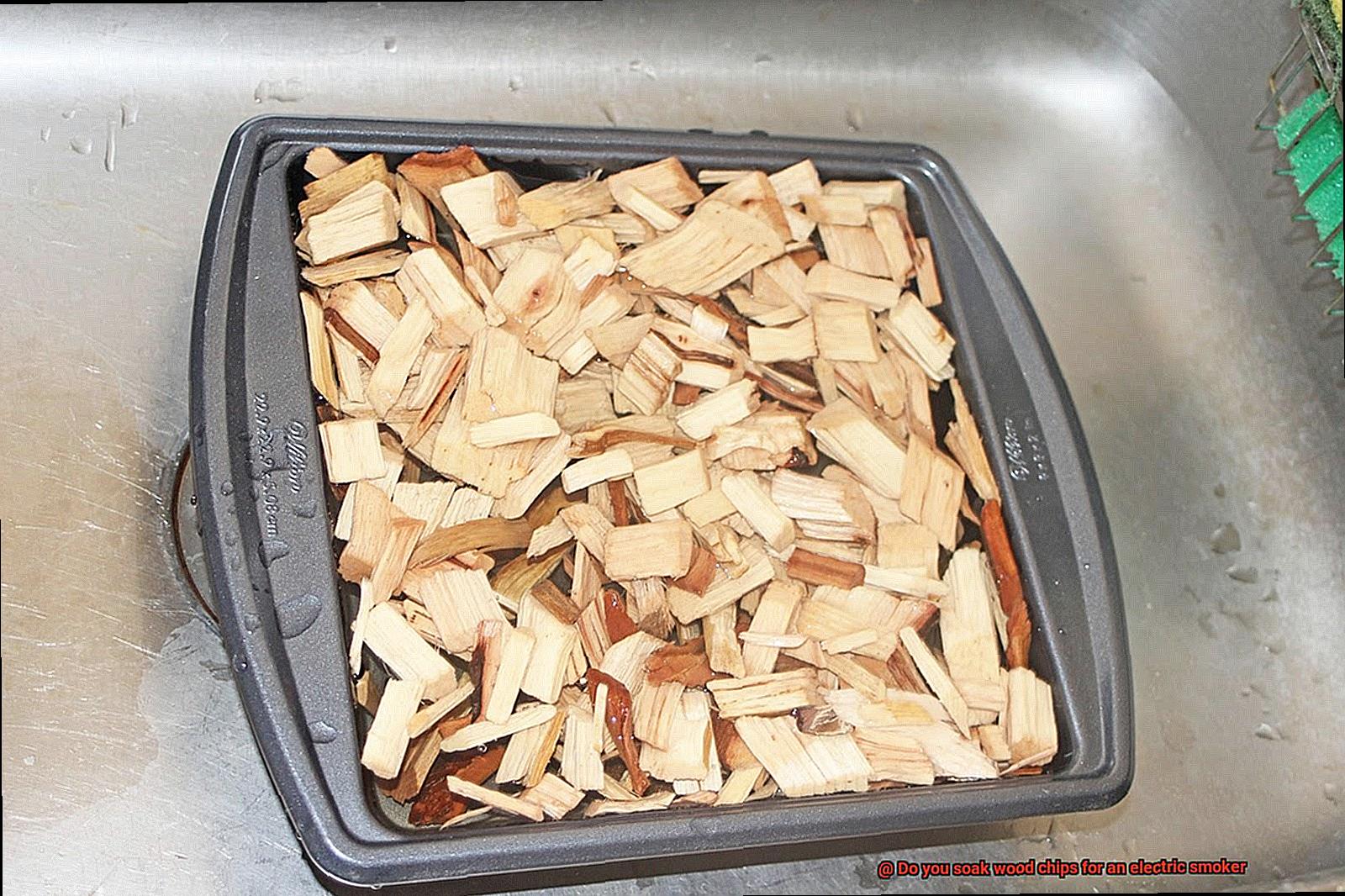
Electric smokers come in various sizes and styles, from compact countertop models to large freestanding units. They are popular among home cooks and BBQ enthusiasts because they are easy to use and require minimal effort compared to traditional smokers that require constant monitoring and adjustment. Plus, they eliminate the need for charcoal or propane, making them a cleaner and more eco-friendly option.
Do You Soak Wood Chips for an Electric Smoker?
The answer isn’t clear-cut, as it depends on a few factors.
Firstly, soaking wood chips can help produce a milder flavor profile. If you prefer a less intense smoke taste, soaking the chips in water for 30 minutes to an hour can do the trick. This method also results in a slower, more controlled burn, perfect for smoking larger cuts of meat that require extended cooking times.
However, there are downsides to soaking wood chips for an electric smoker. Wet chips take longer to ignite, leading to longer preheat times and increased electricity usage. Additionally, the extra moisture from the soaking process may produce more steam than smoke, potentially altering the overall flavor of your food.
Conversely, using dry wood chips can generate a more robust and authentic smoke flavor. Dry chips ignite faster, resulting in quicker preheat times and less electricity usage. They also produce less steam, giving your food a pure smoke taste.
Ultimately, whether or not to soak your wood chips is a personal preference and requires some experimentation. Take the time to try both methods and determine which produces the desired flavor profile for your individual taste.
In summary, consider these factors when deciding whether or not to soak your wood chips:
- Do you prefer a milder or stronger smoke taste?
- Are you smoking large cuts of meat that require extended cooking times?
- Can you afford extended preheat times and increased electricity usage?
Benefits of Soaking Wood Chips
Soaking wood chips in an electric smoker might be the solution you need. As an expert, I can tell you that while there are both benefits and drawbacks to soaking wood chips before use, it can undoubtedly take your smoking game to the next level.
Let’s start with the benefits. Firstly, soaking wood chips helps prevent them from burning too quickly, which can cause inconsistent smoke and even a potential fire hazard. By soaking them for at least 30 minutes before use, you slow down the burning process and create a smoldering smoke that lasts longer.
Secondly, soaking wood chips adds moisture to the smoking environment, which is beneficial for certain types of meat. Poultry and fish tend to dry out fast during smoking, but adding moist wood chips can help keep the environment humid and prevent meat from drying out too quickly.
Thirdly, soaked wood chips create more intense smoky flavors in your meat. The water absorbed by the wood expands and creates more surface area for smoke to adhere to, resulting in a more robust smoky flavor in your meat.
However, there are also some downsides to consider when it comes to soaking wood chips. One potential issue is that it can result in longer preheating times for your smoker since the water needs to evaporate before smoke can be produced. Additionally, wet wood chips can produce steam instead of smoke, which may impact the overall flavor profile of your meat.
Disadvantages of Soaking Wood Chips
While soaking wood chips in an electric smoker is a popular technique, it may not be the best approach. Here are some disadvantages of soaking wood chips to consider before you light up your next barbecue.
Firstly, soaking wood chips can significantly prolong the preheating process of your smoker. Wet wood chips take longer to ignite and produce smoke than dry ones. This increased heating time can delay the cooking process and leave your hungry guests waiting longer than necessary.
Moreover, soaking wood chips can result in inconsistent smoke production. Chips that are not soaked for the same duration or are not fully submerged in water can produce varying levels of smoke during the cooking process. This creates unevenly smoked meat and an overall less desirable flavor.
In addition to inconsistent smoke production, soaking wood chips can also lead to excess moisture in your smoker. As wet wood chips cook, they produce steam that can cause your meat to become soggy or rubbery. This moisture can also affect the texture of the meat and make it less enjoyable.
Lastly, soaking wood chips can be a time-consuming hassle. From remembering to soak them ahead of time to ensuring they are fully submerged in water for at least 30 minutes, it adds an unnecessary step to your grilling process.
To avoid these issues, consider using dry wood chips instead. They ignite faster and produce a consistent amount of smoke throughout the cooking process, resulting in perfectly smoked meat every time.
How to Soak Wood Chips for an Electric Smoker
If you’re looking to elevate the flavor of your meat when using an electric smoker, soaking your wood chips is a must. But how exactly should you go about it? Here are some expert tips to help you soak your wood chips like a pro:
Choose the Right Wood Chips
First things first, it’s important to choose the right type of wood chips for your smoking needs. Different woods produce different flavors, so experiment with different types of wood chips to find the flavor that suits your taste buds. Popular options include hickory, mesquite, apple, and cherry.
Soak for the Appropriate Amount of Time
Soaking your wood chips can help them smoke more slowly and last longer, leading to a better smoky flavor in your meat. However, don’t soak them for too long as over-soaking can cause the wood chips to become waterlogged and produce less smoke. Thirty minutes is typically enough time to get the desired effect without causing any issues.
Evenly Spread Throughout Your Smoker
Once you’ve soaked your wood chips, make sure to evenly spread them throughout your smoker. This will ensure that the smoke flavor is consistent throughout the cooking process, resulting in a perfectly flavored meat.
Avoid Overdoing It
While soaking wood chips can be beneficial, avoid overdoing it as this can cause them to become waterlogged and produce less smoke. Additionally, soaking them for too long can prolong the smoking process by taking longer to dry out.
Experiment with Different Methods
The decision on whether or not to soak wood chips for an electric smoker depends on personal preference and the specific model of smoker being used. Experiment with different methods to find what works best for you and your smoker.
Different Types of Wood Chips for Smoking
Smoking food in an electric smoker has become a popular way of imparting a delicious smoky flavor to meats, poultry, and fish. However, the type of wood chips used plays a crucial role in determining the flavor and aroma of the food. Let’s take a closer look at the different types of wood chips available and how they affect the taste of your dishes.
Hickory Wood Chips
Hickory is one of the most commonly used woods for smoking, and for good reason. Its strong and bold flavor pairs well with beef, pork, and poultry. When using hickory wood chips, the meat is infused with a rich and smoky flavor that is irresistible.
Mesquite Wood Chips
Mesquite wood chips are ideal for smoking beef and game meats due to their distinctively bold and earthy flavor. They are also great for grilling. When using mesquite wood chips, the meat takes on a unique taste that is sure to impress.
Apple Wood Chips
If you prefer a milder and sweeter flavor, apple wood chips are an excellent choice. They work well with pork, poultry, and even seafood and provide a slightly sweet and fruity taste that is both subtle and delicious.
Cherry Wood Chips
Cherry wood chips have a sweetness that is similar to apple wood but with a hint of tartness. They pair well with poultry, pork, and fish. The sweet and mild flavor of cherry wood chips adds depth to the dish without overpowering it.
Alder Wood Chips
Alder wood chips have a light and delicate flavor that works well with fish and seafood. They provide a subtle nutty taste that complements the natural taste of fish without overwhelming it.
Oak Wood Chips
Oak wood chips are versatile and can be used with various meats, providing a mild yet smoky flavor that complements rather than overpowers the food. They are ideal for smoking beef or lamb and can add depth to other meats as well.
Pecan Wood Chips
Pecan wood chips have a nutty and sweet flavor that works well with pork and poultry. They add complexity to the dish, providing a unique and delicious taste that is sure to impress.
When selecting your wood chips, it’s vital to consider the intensity of the smoke flavor you want. Woods like mesquite and hickory can be quite strong, while apple and cherry are milder. Experimenting with different combinations of woods can result in unique flavors for your dishes, taking them to the next level.
Best Practices for Smoking with an Electric Smoker
Smoking meat with an electric smoker can be a game-changer, but it’s crucial to follow some best practices to ensure that your meat comes out perfectly every time. From choosing the right wood chips to monitoring the temperature, let’s dive into the essential tips for smoking with an electric smoker.
First and foremost, choosing the right type of wood chips is key. Different types of woods offer different flavors, so research and experiment with various wood combinations to find the perfect flavor for your taste buds. Popular options include hickory, mesquite, apple, cherry, alder, oak, and pecan woods.
Next up is the age-old debate of whether or not to soak your wood chips. While some experts swear by soaking as it helps slow down the burning process and produces a more consistent smoke, others argue that it’s unnecessary and can actually hinder the smoking process by reducing the amount of smoke produced. The verdict? It’s up to personal preference. Try both soaked and dry wood chips to see which method works better for you.
Before introducing your meat to the smoker, always preheat it first. This ensures that the temperature inside is consistent throughout the smoking process. Keep an eye on the temperature frequently, making adjustments as needed to maintain a stable temperature.
Lastly, using a high-quality meat thermometer is non-negotiable when smoking with an electric smoker. This helps ensure that your meat reaches a safe internal temperature and prevents any potential foodborne illness. Don’t skimp on this step.
t4n8mMJLFI8″ >
Conclusion
In conclusion, the decision to soak wood chips for an electric smoker is entirely subjective and dependent on several factors. Soaked wood chips can create a milder flavor, slower burn, and more intense smoke flavor in your meat but may also lead to longer preheat times and increased electricity usage. On the other hand, dry wood chips can generate a more robust and authentic smoke flavor with faster preheat times and less electricity usage.
To find your perfect balance between these two methods, it’s essential to experiment with both soaking and dry wood chips. It all boils down to personal preference when it comes to taste.
When selecting the type of wood chips for smoking in an electric smoker, consider the intensity of the smoke flavor you want. Different types of woods offer different flavors such as hickory for beef and pork, apple for poultry and seafood, mesquite for game meats, cherry for pork and fish, alder for fish and seafood, oak for beef or lamb, and pecan for pork or poultry.
Following best practices when smoking with an electric smoker is crucial to ensure perfectly smoked meat every time.
This includes choosing the right type of wood chips, preheating the smoker before introducing meat to it, monitoring temperature frequently during cooking process making adjustments as needed to maintain a stable temperature.
And lastly using a high-quality meat thermometer is non-negotiable when smoking with an electric smoker to prevent any potential foodborne illness.

